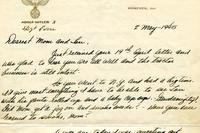The U.S. Air Force says the top challenge to the F-35A Joint Strike Fighter beginning operational flights next year is its logistics and training software, the head of the program's integration office said.
The software, known as the Autonomic Logistics Information System, or ALIS (pronounced "Alice"), is a computer database that helps determine whether the plane is safe to fly. It includes a suite of applications covering everything from maintenance and flying, to training and mission planning.
"The long pole that you're going to hear from all of us is really the delivery of the ALIS software," Maj. Gen. Jeffrey Harrigian, director of the F-35 integration office at the Pentagon, said during a briefing with reporters Monday at the annual Air and Space Conference organized by the Air Force Association. "It's the timing of our software for ALIS that we're most concerned about."
Even so, the Air Force expects to reach the milestone, known as initial operational capability, or IOC, by Aug. 1, 2016, with between 12 to 24 jets, Harrigian said. The service currently has 74 F-35As in the fleet, as well as about 200 pilots and some 2,000 maintainers for the aircraft, he said.
The Marine Corps recently announced its F-35B jump-jet variant is ready to fly initial operations, albeit with a less lethal version of the aircraft. For example, the early operational F-35Bs won't include a new night-vision helmet, Small Diameter Bomb II or GAU-22/A four-barrel 25mm Gatling gun -- or the ability to stream video or simultaneously fuse sensor data from four aircraft.
The Navy, meanwhile, plans to make a similar declaration in late 2018 or early 2019.
The Air Force integration office is working with the program office, which is located in a separate building, and the manufacturer of the airplane, Lockheed Martin Corp., to fix the software deficiencies, which includes "basic" features such as tracking when a spare part enters the system so a maintainer knows it's there, Harrigian said. For example, officials sometimes have to manually type part numbers into the system rather than use a device like a bar-code scanner, he said.
"Some of that is going on," he said of the manual process. "It is a problem they're working through. The bottom line is, when you look at the number of parts that are going into the jet and how we manage that moving forward, we can actually understand which are the ones we actually need to code and care about."
Separately from ALIS, Harrigian also said the program office is still working to resolve a problem flagged during flight and related to target tracking. Describing it as a "weapons quality track issue," he said, "if you get a shoot cue, you need to know that it's valid." He later added, "When a target is placed on a display, it has multiple contributors. There's several sensors in this airplane. I can't get into the specifics of how that all works. But ... sometimes that display wasn't giving the pilot the information he needed or she needed."
Another official, Col. Todd Canterbury, a former F-35A test pilot, said the issue is similar to -- but not necessarily the same as -- what has surfaced in the Marine Corps' F-35B, which required a software patch to merge targeting data from multiple aircraft.
"Weapons quality track adds to the lethality of this airplane by making sure that our weapons are going to their intended target," he said. "The fusion issue is, this jet is so good at bringing in multiple sensors and identifying multiple areas of interest for possible targets, we need to make sure that we find the exact target we want to get."
The Joint Strike Fighter is the Pentagon's most expensive weapons acquisition program, estimated to cost a total of $398.6 billion for a total of 2,457 aircraft for the three services.
Eight countries have committed to help develop the F-35, including the U.K., Italy, the Netherlands, Turkey, Canada, Australia, Denmark and Norway. Also, Israel, Japan and South Korea plan to buy production models of the aircraft.








